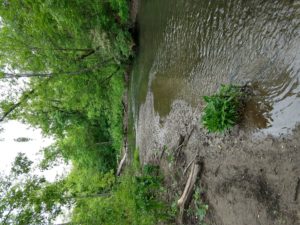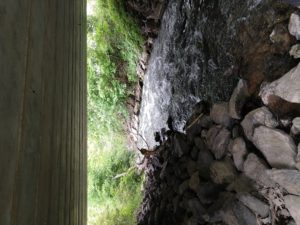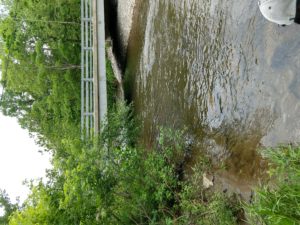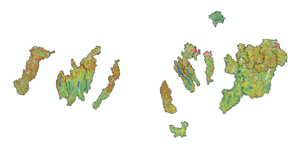WHAT ARE ORGANIC MICROPOLLUTANTS?
WHY ARE WE STUDYING ORGANIC MICROPOLLUTANTS IN CENTRAL NEW YORK?



Many studies have reported the occurrence of low levels of many organic micropollutants in U.S. surface waters, especially those impacted by wastewater discharges, and agricultural runoff. Studies continue to reveal the ubiquitous presence of organic micropollutants in the environment, highlighting the ongoing need to better understand the sources, fate, and transport of organic micropollutants, as well as how organic micropollutant prevalence may vary across watersheds (in space) and be influenced by different hydrologic processes (through time).
Though research across the US has shown organic micropollutants occur everywhere, but we still don’t fully understand how different hydrologic processes (for instance, snowmelt versus low flow conditions) impact which organic micropollutants we detect in rivers, and how the occurrence of these micropollutants varies at the regional scale. Central New York, as our own backyard, is an important place to study these chemicals, to gain an idea of the background occurrence of these chemicals in both pristine and human-impacted areas, how their occurrence varies through time, and how it might relate to human behavior.
WHAT ARE OUR GOALS?
Our primary objective is to elucidate the spatial and temporal occurrence patterns of organic micropollutants in waterways downstream of agricultural watersheds and how they are shaped by human decision-making and by hydrologic processes. We aim to provide needed information regarding organic micropollutants impacts on downstream communities and recommendations to upstream stakeholders.
Our planned project aims to link human behavior, hydrologic processes, and the spatial
and temporal occurrence and concentrations for 500+ organic micropollutants across agricultural, urban, and forested watersheds in central New York. Recent advances have been made at the national level to characterize the presence of organic micropollutants in streams and groundwaters, and several state agencies are prioritizing statewide monitoring of organic micropollutants. We will build on this ongoing work across the U.S. to improve scientific understanding of where and when organic micropollutants occur in agricultural, urban, and pristine landscapes and to identify potential risks. We endeavor to better characterize the co-occurrence between hydrologic processes and organic micropollutants, to link upstream activities, in terms of application of manure or biosolids and wastewater releases, to downstream impacts.
understanding of where and when organic micropollutants occur in agricultural, urban, and pristine landscapes and to identify potential risks. We endeavor to better characterize the co-occurrence between hydrologic processes and organic micropollutants, to link upstream activities, in terms of application of manure or biosolids and wastewater releases, to downstream impacts.
WHAT IS OUR RESEARCH APPROACH?
To meet our objective, we propose to pursue a multidisciplinary approach of field sampling, chemical screening, hydrologic modeling, and survey analysis of self-reported human behavior with an emphasis on the use and application of biosolids and manure. Our project consists of three aims:Aim 1: Survey agriculturalists across New York state regarding their behavior and decision-making process surrounding the application of manure and biosolids
Our first aim will use a survey-based approach to understand basic patterns of human behavior and decisions regarding the application of manure and biosolids. This human behavioral data can be used as an input to models to predict the transmission of CECs to surface waters, as well as to make behavioral recommendations based upon our findings.
Aim 2: Characterizing the spatial and temporal occurrence patterns of CECs at sites downstream of agricultural watersheds featuring different levels of agricultural land use
Our field study will be conducted in two phases. In Year 1, two sampling campaigns will be conducted during August/September (to capture postgrowing season response) and April/May (to capture snowmelt response and first land application of fertilizers, manure, or biosolids) at selected sites. We will combine passive and grab sampling to allow adaptive CEC monitoring.
In Year 2, more frequent monitoring between April and October will be conducted at priority sites identified in Year 1 to characterize possible impacts of variation in hydrological processes and meteorological conditions on patterns of CEC types, concentrations, and loadings.
Aim 3: Spatio-temporal hydrologic modeling of CEC presence and concentrations
Hydrological processes, including precipitation, snowmelt, soil storage, groundwater, and streamflow, translate water and chemical constituents through the hydrological cycle. The timing, magnitude, and co-occurrence of these different processes throughout the year ultimately influences both the transport and fate of CECs within the environment. Our ultimate goal within Aim 3 is to enable predictive modeling in space and through time to identify how variations in hydrologic processes throughout the year (when, under what hydrologic states) and locations in the landscape (where) concentrations and loads of 500+ CECs are highest and therefore pose the greatest threat to downstream populations and ecosystems.